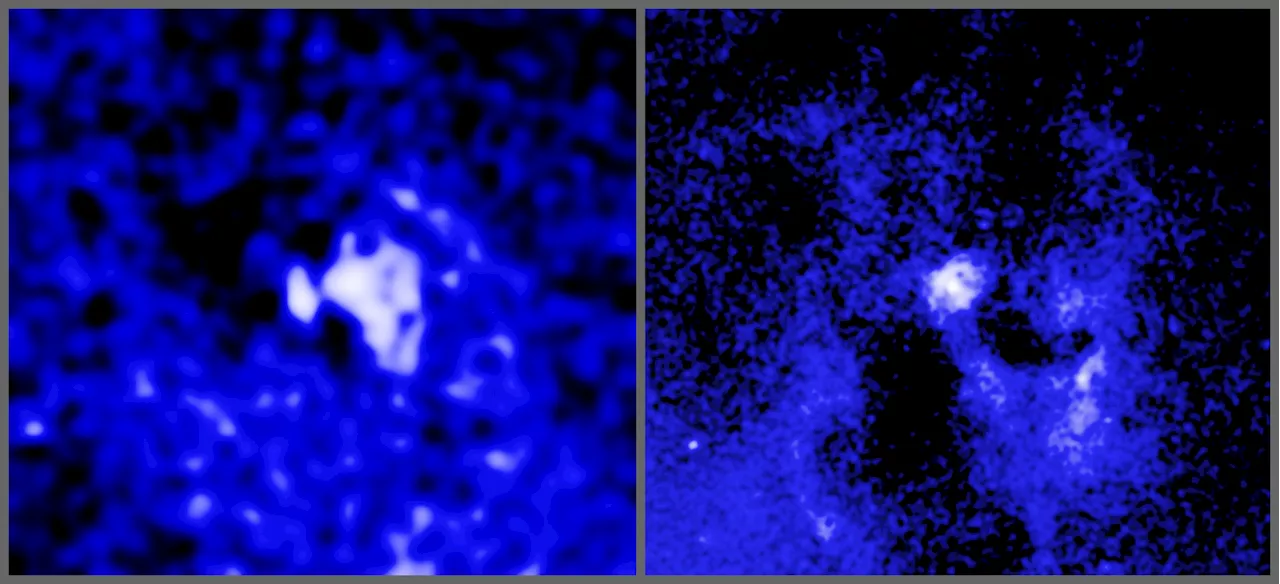Using the Neutron Star Interior Composition Explorer (NICER) onboard the International Space Station, astronomers have observed a distant X-ray binary known as EXO 2030+375. The observational campaign allowed them to explore a giant outburst that occurred in this system.
Astronomers observe giant outburst of a distant X-ray binary retrieved 10 June 2024 from https://phys.org/news/2024-06-astronomers-giant-outburst-distant-ray.html
This document is subject to copyright. Apart from any fair dealing for the purpose of private study or research, no part may be reproduced without the written permission. The content is provided for information purposes only.Use this form if you have come across a typo, inaccuracy or would like to send an edit request for the content on this page. For general inquiries, please use ourThank you for taking time to provide your feedback to the editors.
Your feedback is important to us. However, we do not guarantee individual replies due to the high volume of messages.to let the recipient know who sent the email. Neither your address nor the recipient's address will be used for any other purpose. The information you enter will appear in your e-mail message and is not retained by Phys.org in any form.Get weekly and/or daily updates delivered to your inbox.
Physics News Science News Technology News Physics Materials Nanotech Technology Science
United States Latest News, United States Headlines
Similar News:You can also read news stories similar to this one that we have collected from other news sources.
 Scientists find slowest spinning 'radio neutron star' — it breaks all the dead-star rulesRobert Lea is a science journalist in the U.K. whose articles have been published in Physics World, New Scientist, Astronomy Magazine, All About Space, Newsweek and ZME Science. He also writes about science communication for Elsevier and the European Journal of Physics. Rob holds a bachelor of science degree in physics and astronomy from the U.K.
Scientists find slowest spinning 'radio neutron star' — it breaks all the dead-star rulesRobert Lea is a science journalist in the U.K. whose articles have been published in Physics World, New Scientist, Astronomy Magazine, All About Space, Newsweek and ZME Science. He also writes about science communication for Elsevier and the European Journal of Physics. Rob holds a bachelor of science degree in physics and astronomy from the U.K.
Read more »
 Astronomers help find most distant galaxy using James Webb Space TelescopeAn international team of astronomers today announced the discovery of the two earliest and most distant galaxies ever seen, dating back to only 300 million years after the Big Bang. These results, using NASA's James Webb Space Telescope (JWST), mark a major milestone in the study of the early universe.
Astronomers help find most distant galaxy using James Webb Space TelescopeAn international team of astronomers today announced the discovery of the two earliest and most distant galaxies ever seen, dating back to only 300 million years after the Big Bang. These results, using NASA's James Webb Space Telescope (JWST), mark a major milestone in the study of the early universe.
Read more »
 Scientists detect slowest-spinning radio emitting neutron star ever recordedScientists have detected what they believe to be a neutron star spinning at an unprecedentedly slow rate -- slower than any of the more than 3,000 radio emitting neutron stars measured to date.
Scientists detect slowest-spinning radio emitting neutron star ever recordedScientists have detected what they believe to be a neutron star spinning at an unprecedentedly slow rate -- slower than any of the more than 3,000 radio emitting neutron stars measured to date.
Read more »
 Slowest-ever spinning neutron star emits radio signals every 54 minutesThe radio signal from the neutron star, detected by scientists, traveled a distance of approximately 16,000 light years to reach Earth.
Slowest-ever spinning neutron star emits radio signals every 54 minutesThe radio signal from the neutron star, detected by scientists, traveled a distance of approximately 16,000 light years to reach Earth.
Read more »
 “Extraordinary” Slow-Spinning Neutron Star Shakes AstrophysicsScience, Space and Technology News 2024
“Extraordinary” Slow-Spinning Neutron Star Shakes AstrophysicsScience, Space and Technology News 2024
Read more »
 Astronomers observe jet reorientation in 'Death Star' black holesHuge black holes are firing powerful beams of particles into space—and then changing their aim to fire at new targets. This discovery, made using NASA's Chandra X-ray Observatory and the U.S.
Astronomers observe jet reorientation in 'Death Star' black holesHuge black holes are firing powerful beams of particles into space—and then changing their aim to fire at new targets. This discovery, made using NASA's Chandra X-ray Observatory and the U.S.
Read more »
